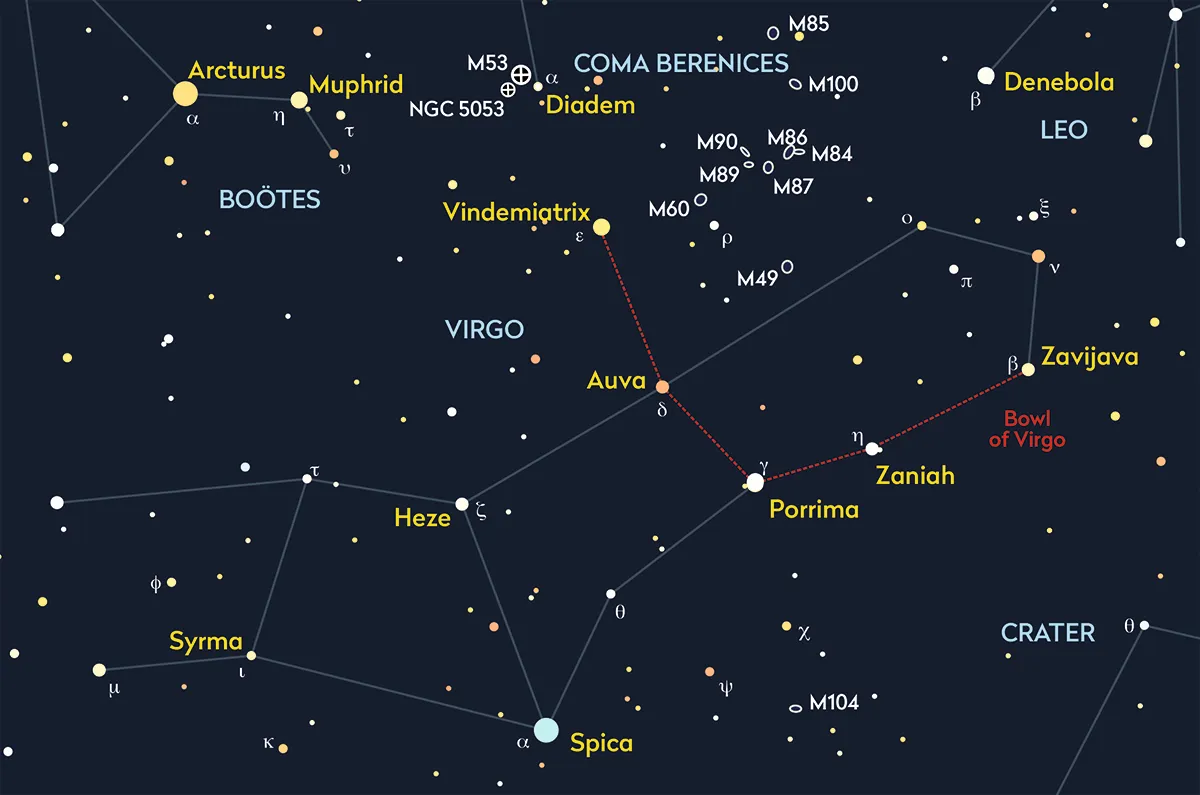Vindemiatrix, also known as Epsilon Virginis, is the third-brightest star in Virgo, shining at mag. 2.8.
Located 110 lightyears away, it marks the eastern lip of the large semi-circular pattern known as the ‘Bowl of Virgo’, which is visible in spring.
Measuring 20° across, the bowl is formed from Vindemiatrix, Auva, Porrima, Zaniah and Zavijava, Epsilon (ε), Delta (δ), Gamma (γ), Eta (η) and Beta (β) Virginis respectively.
The bowl stars are collectively part of Al ‘Awwā’, which is Arabic for ‘the Barker’.
The name Vindemiatrix originates from the Greek term for ‘the grape gatherer’, somewhat corrupted in its Latinised form to mean ‘the grape harvestress’.
First morning visibility was a sign it was time to pick the grapes.

Vindemiatrix is a G8 III star: a yellow (G8), giant (III) star with a photospheric temperature of 5086K.
It’s 2.6 times more massive than the Sun and 77 times more luminous.
Interestingly, it’s a bright X-ray source, estimated to be 300x brighter than the Sun in this part of the spectrum.
The strong X-ray output is presumably due to its strong magnetic field affecting the star’s surface.
The star’s spectrum has been used as a reference for the classification of other stars since 1948.
Estimated to be around 560 million years old, Vindemiatrix is thought to have started life as a white B-class star and to now have a core that’s in the process of switching from hydrogen to helium fusion.
It rotates fairly slowly at 2.3km per second, taking 173 days to complete one rotation.
This guide originally appeared in the April 2023 issue of BBC Sky at Night Magazine.
